What Does Muenster Cheese Taste Like? A Flavor Guide For Cheese Fans
Muenster cheese, a delightful dairy product with a rich culinary history, often sparks curiosity among food enthusiasts.
Originating from the Alsace region, this smooth and supple cheese has captivated taste buds worldwide.
Its unique characteristics make it a standout in the cheese landscape, promising an intriguing flavor profile that sets it apart from other varieties.
The texture and appearance of Muenster cheese alone can pique anyone's interest, hinting at a sensory experience waiting to be unraveled.
Cheese lovers and culinary adventurers alike find themselves drawn to its mysterious allure.
Professional chefs and home cooks have long appreciated this versatile ingredient for its potential to elevate dishes.
Understanding the nuanced essence of Muenster cheese can transform your approach to cooking and eating.
Dive into this article to uncover the delectable secrets behind this remarkable cheese.
All You Should Know About Muenster
Muenster cheese isn’t just known for its creamy taste and bright orange edge, it also has an interesting history and some fun details that make it special. If you’re curious about where Muenster comes from and what gives it its unique look, let’s explore the story behind this one-of-a-kind cheese together.
Where It Comes From
Muenster cheese is well-known in America, but its true roots trace back to France. Specifically, this cheese comes from northeastern Alsace.
Monks traveled to Munster valley in the 7th century with religious missions and cheese-making skills. Local cows produced lots of milk, so monks created cheese to preserve milk and feed people.
Cheese received its name from this specific valley.
During the 1800s, French immigrants brought Muenster recipes to Wisconsin.
Soon, Muenster became a common cheese in stores nationwide. Currently, American and European countries lead Muenster cheese production.
Muenster Cheese Overview
Muenster cheese comes from a special washing process with brine or mold-based liquid. Cheesemakers typically use pasteurized cow milk to create this product.
Its appearance includes a semi-soft texture, an orange rind with red patterns, and a light yellow inside.
Muenster's flavor changes based on milk source, age, and type.
Young Muenster common in America offers a mild and smooth taste. Older Muenster versions provide a richer flavor with stronger scents.
Makers enhance Muenster's taste by adding special ingredients like annatto colorant or paprika. Annatto brings sweet and pepper notes with a touch of nutmeg.
Paprika contributes flavors ranging from slightly sweet to very spicy.
Muenster offers complex flavor layers that complement many dishes without overpowering their original taste.
Its delicate balance makes it perfect for multiple cooking styles.
Melting is another fantastic quality of this cheese.
Muenster works wonderfully in hot dishes like grilled cheese sandwiches. People also enjoy it as a standalone appetizer.
Nutritional benefits make Muenster even more appealing. Packed with protein and important vitamins such as Vitamin C, A, and Calcium, this cheese supports healthy eating.
Two primary versions exist: American and European styles. Muenster cheese remains widely produced in America, France, and Germany, making it easily accessible in many countries.
Cheese Making Process
Muenster cheese shows some key differences between American and European production methods. Milk sources create the first notable distinction, with Europeans using raw milk while Americans prefer pasteurized milk.
Production steps remain quite similar across both regions. Cheesemakers form curds and carefully place them into molds before starting the aging process.
Salt brine and annatto, a plant-based colorant, help create Muenster's signature orange-red rind. Small cheese wheels age for 2-3 weeks, while larger wheels might require around 3 months to develop fully.
People interested in making homemade Muenster cheese can follow specific steps to create this classic dairy product.
What Muenster Cheese Tastes Like
A lot of people think Muenster cheese is strong-smelling or spicy because of its colorful rind, but that’s not true. Muenster actually has a smooth, creamy flavor that starts out mild and gets sharper and a bit salty as it ages.
Most Muenster cheese isn’t aged very long, so it tends to taste lighter than other cheeses like Swiss or Gouda. There are also some small differences in flavor between American and European Muenster, which makes trying each one a unique experience.
American-Style Muenster
Muenster cheese made in America stands out as a top choice in grocery stores. People love its smooth, soft feel with a light salty taste.
Cheesemakers craft this version using whole cow milk that goes through pasteurization. Small cheese rounds need about 3 weeks to develop and complete ripening within 4-6 weeks.
Bigger cheese wheels might require 2 to 3 months for full aging.
American Muenster differs from European styles with its clean scent.
Washing the cheese coating prevents strong odors. Most Muenster produced in United States comes as a young cheese variety.
French Muenster
France birthed Muenster cheese with multiple local versions. Typical French Muenster comes from raw milk.
Special French types like Gerome and Alsace include anise and caraway seeds.
Alsatian Munster appeared first, while Gerome serves as another popular style.
Both types earned AOC labels highlighting their rich background and quality standards.
Cheese ages between 5 weeks and 3 months, creating subtle flavors more nuanced than American versions without excessive tanginess.
Gerome types mature at least 21 days, with smaller versions requiring minimum 14 days of aging.
French Muenster produces a strong odor and sticky reddish-orange rind.
Bacteria and annatto help develop these signature characteristics.
German-Style Muenster
Muenster cheese comes from several small regions in Germany, such as Wangen and Munstertal. German makers create this cheese with a soft, light-colored look.
Its flavor stays mild and gentle. Cheese makers age it for about a month, keeping its special orange outer layer.
Germany's cheese production dropped during difficult historical times. French cheesemakers stepped forward and grew their reputation during this period.
They expanded their Muenster cheese market while German production remained limited.
Cheese Aging & Its Effects on Muenster Taste
As Muenster cheese ages, its taste changes from mild and creamy to stronger and more robust.
Young Muenster is smooth and gentle, making it great for melting or snacking.
As it gets older, the flavor becomes sharper and the texture turns firmer.
Aged Muenster can develop a slightly tangy taste and a richer aroma.
The length of time the cheese ages shapes how bold and complex its final flavor will be.
Best Ways to Store Muenster
How long Muenster cheese stays fresh depends on how you store it and what form it’s in. Sliced Muenster lasts just a few days at room temperature but will keep for two to three weeks in the fridge.
If you have a whole block, you can store it in the refrigerator for up to six weeks. The firmer the cheese, the longer it usually lasts, so harder Muenster tends to keep better than the softer kind.
Signs Your Muenster Is Bad
Muenster cheese can spoil quickly without proper storage. Eating old cheese risks health problems because it loses taste and nutrients while harmful bacteria multiply.
Signs of spoiled Muenster cheese include:
When you notice any of these warning signs, discard the cheese right away.
Muenster Cheese Losing Color
Muenster cheese catches eyes with its striking orange-red outer layer and soft yellow middle. Spotting unusual dark areas or black spots means you should toss the cheese in the trash, as these marks signal potential mold growth.
Cheese Feels Harder Than Usual
Muenster cheese usually feels smooth and creamy. When cheese starts to feel harder after several days, something is wrong.
Moisture loss means the cheese won't taste as good or have the right texture for eating.
How To Store Muenster Cheese
Muenster cheese makes people happy, but many folks waste it by storing it incorrectly. Cheese lovers want to keep their favorite snack fresh and tasty.
Here are some simple ways to store Muenster and make it last longer.
Store Cheese In A Cheese Bag
Muenster cheese needs special care after opening. Wrapping it in plastic might seem simple, but this method can change how the cheese tastes and smells.
Better storage options work well for sliced Muenster. Cheese bags or paper help keep the cheese fresh.
These materials let air move around the cheese, helping it stay good for two weeks. Wrapping the cheese in wax paper before sealing it in a bag can make it last even longer.
Freeze Muenster Cheese
Muenster cheese keeps well in the freezer. Slice the cheese and place it in a sealed bag before freezing.
Block cheese needs wrapping in wax paper to stop freezer burn.
Freezing at 0F stops cheese damage and prevents ice crystals.
Most fridges have a quick freeze setting you can use. Muenster stays good for 8 months when frozen correctly.
Sliced Muenster works great for freezer storage.
What to Eat With Muenster Cheese
Muenster Cheese Recipe Ideas
Muenster cheese is a great choice for all kinds of meals because it works well in so many different recipes. Here are some popular ways people use Muenster cheese in cooking, take a moment to check them out and see which ones you might want to try.
Spinach Quiche Without Crust
Quiche delights people with its amazing flexibility. You can enjoy this dish during brunch, lunch, dinner, or as a quick snack.
Mixing leftover ingredients to create this cheesy and tasty meal is simple, making it a must-try recipe.
Baked Chicken With Muenster
Chicken coated in crispy breadcrumbs and topped with melted Muenster cheese sits as a classic meal many people love. Side dishes like rice or green salads work perfectly with this plate.
Soft Muenster adds a rich, creamy layer that brings gentle wine and spice notes to the entire meal.
Grilled Cheese With Muenster And Avocado
Cheese and avocado create an awesome sandwich combo that always hits the spot. Melted muenster cheese paired with smooth avocado delivers a creamy delight between bread slices that makes lunch feel special.
Buffalo Chicken Grilled Cheese
Buffalo chicken grilled cheese makes a quick lunch ready in 20 minutes. Spicy buffalo sauce meets melted cheese between buttery, crispy bread.
Each bite sends powerful flavor signals across your taste buds.
Muenster Cheese Taste and FAQs
1. How do I store and thaw Muenster cheese?
If you need to freeze Muenster cheese, keep it in a sealed bag or container. When you’re ready to use it, the best way to thaw is by moving it to the fridge for a few days. If you’re in a hurry, you can use a microwave or set the cheese in a bowl of cool water, but the fridge method keeps the texture nicest.
2. Can I make Muenster cheese at home?
Yes, you can! Muenster is one of the simpler cheeses to make yourself. There are plenty of easy tutorials online if you want to try homemade cheese.
3. What cheeses are similar to Muenster?
If you’re out of Muenster or want to try something different, Monterey Jack, Gouda, or Provolone are great choices. They’re all smooth and have a mild flavor that works well in many recipes.
4. Can I eat the rind on Muenster cheese?
Absolutely! The orange rind on Muenster is safe to eat. It’s colored with vegetables or very mild paprika and adds a gentle flavor to each slice.
5. Does Muenster cheese have a strong smell?
Young Muenster has a light, gentle scent. As it gets older, the smell becomes stronger and sharper. Some cheese lovers enjoy that bold aroma, while others might find it a little too intense.
6. Is Muenster cheese like Mozzarella?
Not really, these two cheeses are quite different. Muenster is rich and creamy, while Mozzarella is more fresh-tasting and a little tangy, especially if it’s aged.
Don’t Judge Muenster by Its Smell
Muenster cheese might have a bold, unique smell that can catch you off guard, but don’t let that stop you from giving it a try. Its mild, creamy taste is something many people end up loving after just one bite.
Plus, Muenster isn’t just tasty, it’s also packed with good nutrients that can be part of a healthy diet. If you found this info useful, feel free to share it with friends or family who might be curious about different cheeses.
And if you have your own thoughts or tips about Muenster cheese, I’d love to hear from you!

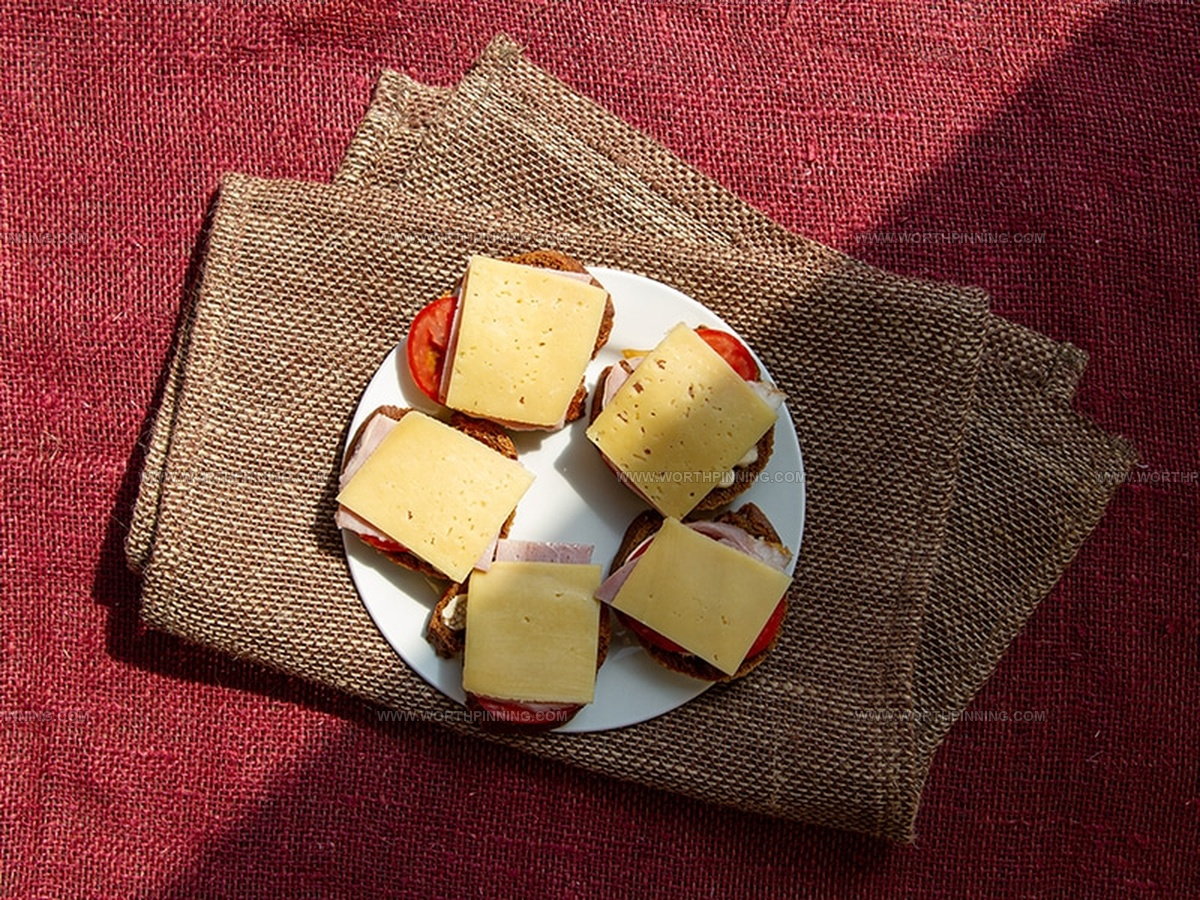
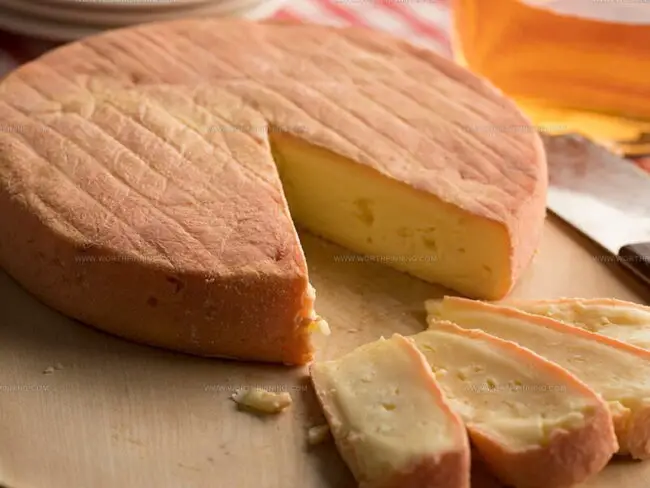
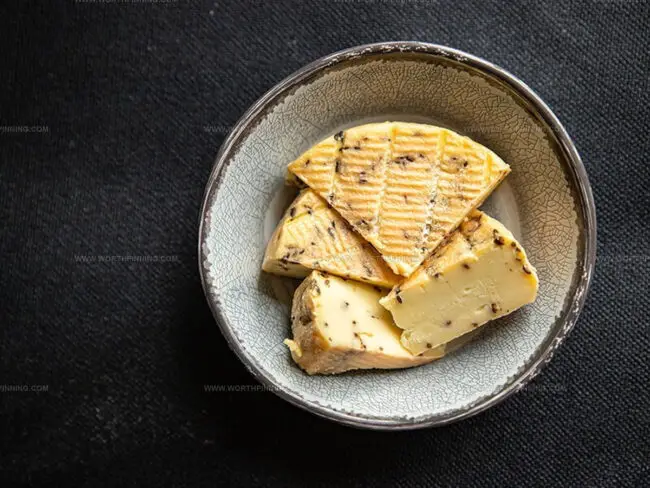
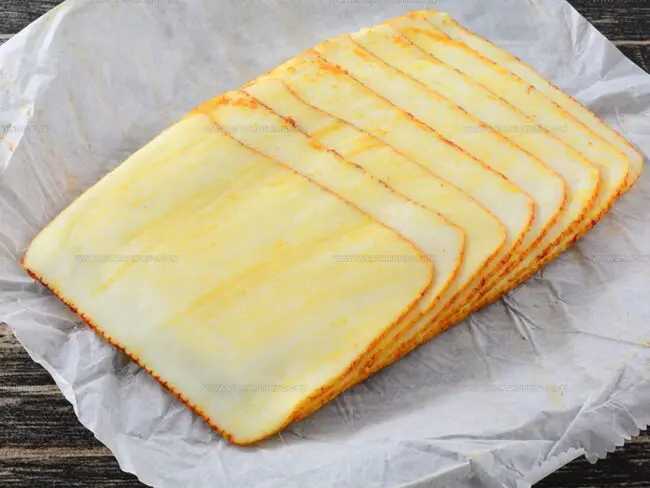
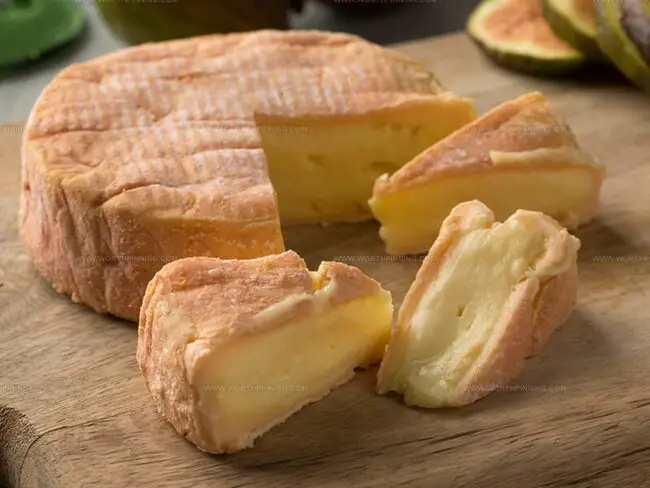
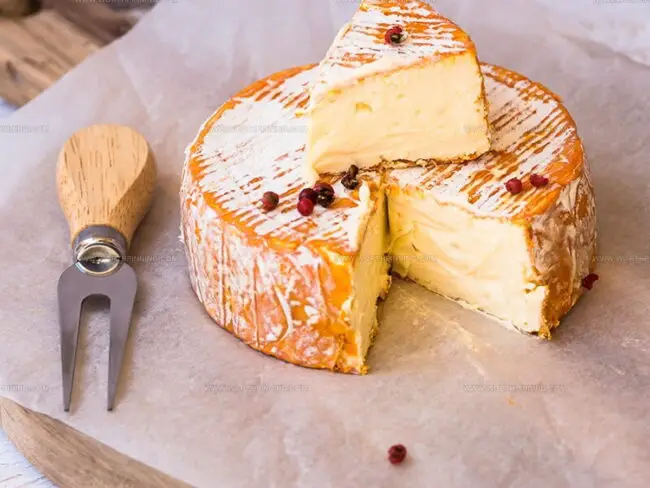
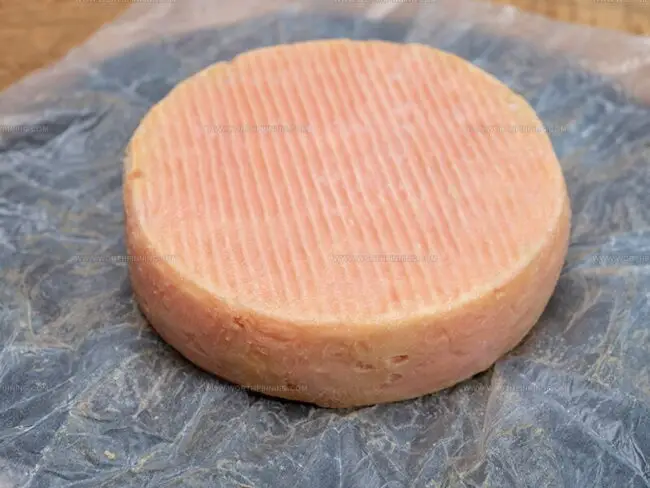
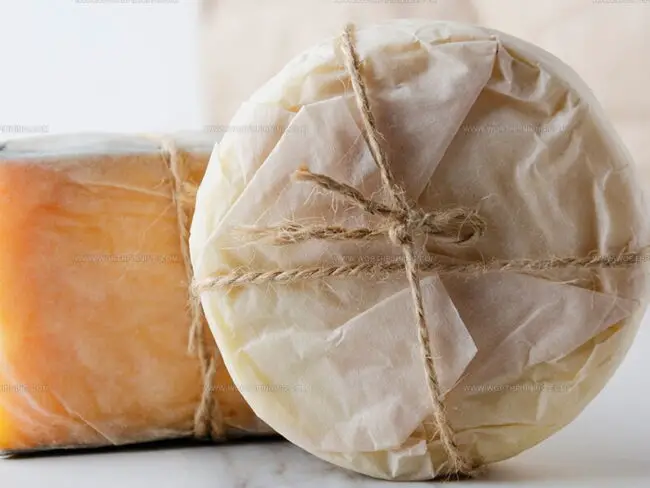
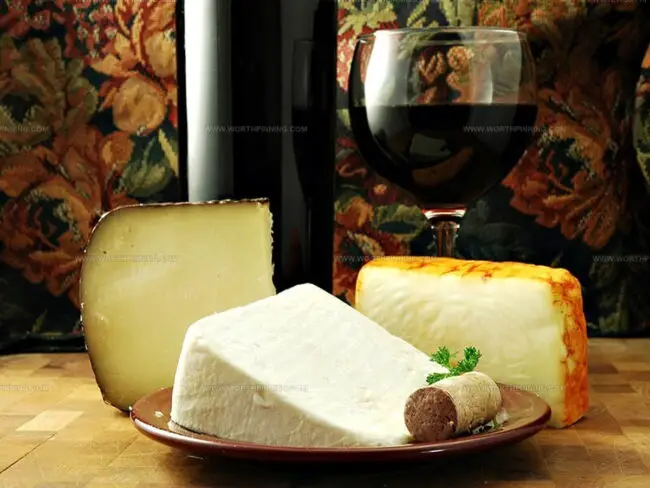
Sophia Rivera
Recipe Developer & Kitchen Tips Specialist
Expertise
Education
Austin Community College
San Antonio Culinary Institute
Sophia’s passion for baking began in her family kitchen, where she spent hours experimenting with new recipes. With a background in baking and pastry arts, she loves making desserts that are as visually stunning as they are delicious.
Sophia is all about using seasonal, locally sourced ingredients to create treats that everyone will enjoy. When she’s not creating mouth-watering desserts, you can find her gardening, making new recipes, or enjoying a relaxing afternoon with her family.